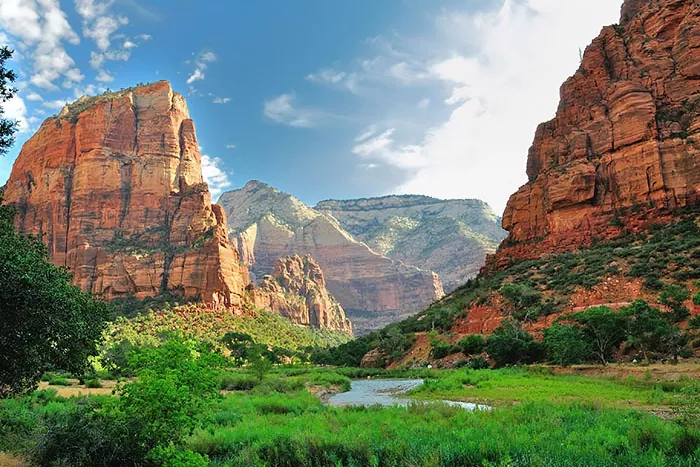While Las Vegas is renowned for its glittering lights and high-stakes entertainment, some of the most awe-inspiring landscapes in the American Southwest lie just a few hours away. Travelers willing to venture beyond the Strip can find themselves immersed in a world of natural wonders, from otherworldly deserts and soaring canyons to ancient forests and pristine night skies.
Death Valley National Park
Approximately two hours from Las Vegas, Death Valley transports visitors into an alien terrain where summer temperatures often soar past 120°F. Its extreme environment is matched only by its dramatic vistas—chief among them, Badwater Basin, the continent’s lowest point at 282 feet below sea level. The colorful mineral deposits of Artists Palette and the park’s vast salt flats offer captivating photo opportunities. Recommended visits occur between October and May to avoid the brutal heat. As a designated International Dark Sky Park, Death Valley offers world-class stargazing after sundown.
Zion National Park
Located roughly 2¾ hours northeast, Zion captivates with its towering sandstone cliffs and dramatic canyon views. The Virgin River winds through this natural masterpiece, offering unique hiking experiences such as The Narrows—an upstream trek through water-carved slot canyons—and the challenging Angels Landing, now accessible by permit only. Visitors should be cautious of seasonal flash floods and are advised to check trail conditions at the visitor center. During peak periods, a free shuttle system helps ease access to popular trailheads.
Joshua Tree National Park
About 4¼ hours southwest of Las Vegas, Joshua Tree National Park marks the intersection of the Mojave and Colorado deserts. Known for its namesake trees and striking boulder formations, the park is a favorite among rock climbers and geology enthusiasts. Summer conditions can be harsh, making cooler months ideal for hiking and exploration. The park also features ancient petroglyphs and evidence of human history spanning 10,000 years. Designated as a Dark Sky Park, it offers some of Southern California’s best views of the Milky Way.
Bryce Canyon National Park
Situated 4½ hours from Las Vegas, Bryce Canyon’s high-altitude setting—between 8,000 and 9,000 feet—presents a surreal landscape of orange spires called hoodoos. These natural formations result from freeze-thaw cycles that occur roughly 200 days each year. While trails often begin with a descent, visitors are reminded that the return climb can be strenuous. Good hiking footwear is essential due to slippery terrain. The park’s elevation and minimal light pollution make it another standout destination for stargazing.
Grand Canyon National Park
Just under 4½ hours away, the Grand Canyon remains a must-see destination, showcasing nearly two billion years of geological history through its vividly colored rock strata. The South Rim, open year-round, is the most visited area, while the North Rim offers a more secluded experience during the warmer months. Visitors are strongly cautioned against attempting to hike from rim to river and back in a single day, especially during the summer. The Grand Canyon also holds cultural significance as the ancestral homeland of 11 Native American tribes and was designated a Dark Sky Park in 2019.
Great Basin National Park
Approximately five hours from Las Vegas, Great Basin offers an off-the-grid alternative for those seeking solitude. Highlights include the ancient bristlecone pine groves—home to trees over 5,000 years old—and ranger-led tours of the Lehman Caves, known for their rare shield formations. The park contains Nevada’s second-highest peak and, unlike most national parks, has no entrance fee. Its isolation makes it one of the darkest places in the continental U.S., ideal for stargazing.
A Roadmap to Adventure
For travelers looking to balance the sensory overload of Las Vegas with natural serenity, these parks provide a compelling itinerary. From adrenaline-fueled hikes to contemplative nights under the stars, each destination offers a unique experience. Seasonality is key—Death Valley in August, for example, poses extreme heat risks—so trip planning should factor in weather and trail conditions.
Whether drawn by geology, astronomy, or the simple desire to reconnect with nature, visitors will find that the true jackpot of the Southwest lies not in its casinos but in its landscapes.


